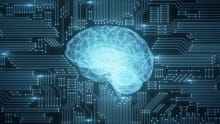Individual learning - How we did it!
Get Set Learn Read similar articles

Individual learning begins right from the time a child is born. The brain absorbs, transforms and assimilates external stimuli, while building individual reflections about the environment. This results in the development of knowledge and growth at an individual level.
Extrapolate this to an organizational level. The need for individual learning is well recognized in organizations. After all, this forms the basis for the famed Individual Development Plan (IDP). It is ironic that most organizations stress the need for an IDP, but do not follow through with an individual learning plan!
Most common challenges in implementing individual learning
Though the reasons individual learning plans rarely happen could be many, but typically it is the financial constraints. The economies of scale that group learning offers suits budgets far better than customized learning. The training cost per learner is lower when resource costs can be averaged out over a large group of learners.
Secondly, the effort of coordinating large scale individual learning programs also becomes nightmarish, especially in large organizations.
Building a case for individual learning
As a part of my last role at Beroe Inc, a procurement intelligence firm, we built the use case for investing in individual learning by conducting a survey to find out why people work. No surprises here - 70% of the respondents felt financial need was the key reason they work. To these respondents, I posed an additional question - "If money were off the table, if all your basic financial needs were taken care of, would you still consider working?" I was stumped to figure out that 86% of this pool responded in the affirmative. That's Maslow's hierarchy in action for you. The survey went on to reveal that the inherent reasons for which people work are: intellectual freedom and professional mastery.
Implementation of individual learning
This powerful insight changed the way learning happened at Beroe. We created conditions where employees had the freedom to set their own learning goals, offered flexibility in mode of delivery and kept programs open quarter after quarter so that no one felt compelled to “sit through a training program.”
This flexibility suited different paces of learning and personal learning styles. More importantly, it allowed time for mastery (especially if skill practice was involved). This is where we saw a significant impact in the quality of work and overall productivity of the organization. Engagement in training was at an all-time high!
We mandated that for an employee to move levels or get promoted, a certain display of skills was required. An employee who felt that he / she already possessed the skill would go on to directly take as assessment, without actually going through the training. If one did not clear the assessment, he / she could take up the training at any point in time.
We also built a very simple in-house tool to monitor usage and completion rates of different courses that were offered.
We found that individual learning lends itself very well to using distributed resources. Being a firm in the knowledge industry, with employees around the world, we leveraged a lot of internal content to build technical courses. This coupled with technology (mostly MOOCs and an online knowledge management system) gave employees the advantage of being able to transcend barriers of geography and time zones.
Individual learning for all
I have had the opportunity to work with persons with disabilities through my career and have found that individual learning works brilliantly. Persons with disabilities have a proclivity to one or more of audio, visual or kinetic processing of information, depending on the disability they are dealing with. Individual learning helps in being truly inclusive in such situations.
The other side…
Individual learning faces its share of criticism. While some people argue that this requires a lot of self-discipline, others say that the benefits of group learning (such as leveraging peer knowledge) are lost.
At the end of the day, while the learning environment may be more exciting and inspiring as a group, the inherent process of learning, knowledge acquisition and cognitive change is largely individual!






